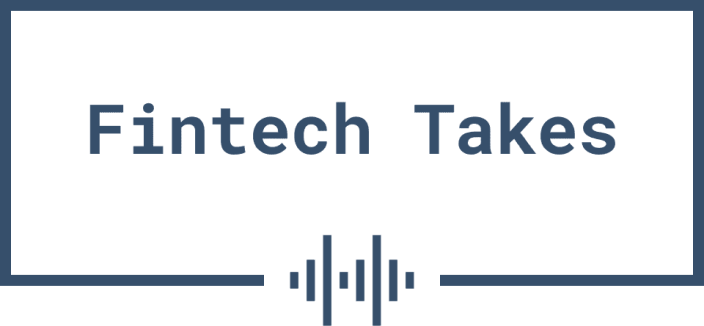
#1: My Boy Only Breaks His Favorite Toys
What happened?
Klarna is launching a new card product in the U.S.:
The new Klarna Card, which the Sweden-based firm announced Wednesday, will offer users various interest-based repayment options for individual purchases, including paying in three- or six-month installments or moving the payment due date for a purchase to the following month, according to the press release. Klarna’s longtime partner WebBank, based in Salt Lake City, Utah, will issue the new card.
Users may pay their bill in full at any time, or at the end of each monthly billing cycle, with no interest, and there is no monthly or annual fee for the new card. Klarna is also offering users up to 10% cash back on purchases at certain merchants with the new card, which will roll out later this year, the firm said in the release.
So what?
This one is tricky, so let’s try to break it down:
- This is the same card that Klarna has been offering in Europe for a while, so it’s not an entirely new product. It will apparently replace the very weird debit + BNPL pay-in-4 card that Klarna had been offering in the U.S. (at a $4.99/month fee) for the last couple of years (I wrote more about the old Klana card here).
- From what I can tell, the new Klarna card functions like a charge card, with embedded BNPL functionality. Users are not allowed to revolve a balance, but they can convert individual purchases (where eligible) into 3-6 month installment loans or move individual purchases into the following month’s payment cycle. Both of these ‘pay later’ options come with interest, ranging from 14.99% to 33.99%.
- Customers earn cash back on purchases (up to 10%) made in the Klarna app. It’s unclear what the average cash back rewards rate will be (substantially less than 10%, I’d guess), if rewards are earned on all purchases in the Klarna app, or if rewards can be earned on purchases outside the Klarna app.
- To get the card, customers will need to have already gotten a loan from Klarna (and repaid it on time) and pass a credit check. Interestingly, Klarna says that its intention with this product is to eventually furnish data to the credit bureaus in order to help their customers build their credit scores (I hope and expect that Klarna will furnish positive and negative data).
Overall, this product seems designed to help Klarna increase its overall ‘share of payments’ with its customers while generating more interchange revenue and increasing the percentage of the company’s interest-bearing loans.
Among other things, it should be a fascinating test of Klarna’s underwriting prowess in the U.S.
#2: But Daddy I Love Him
What happened?
Mercury, in its ongoing quest to pick up as many pieces as possible from last year’s SVB/FRB failures, has launched a personal bank account for startup founders, a group that Mercury CEO Immad Akhund feels is underserved:
While there are plenty of neobanks, many of them “focus on the underbanked. It’s not a great market for power users” who need features like wire transfers or support for multiple users, features that Mercury’s service offers, according to Akhund. Other features are of the type expected by banking power users: multiple debit cards with custom spending limits, access up to $5 million in FDIC insurance through its partner banks and their sweep networks, and interest-bearing savings accounts.
So what?
Founders love building for other founders (and are very good at it). This is yet another example.
Unlimited free wire transfers wouldn’t appeal to most consumers, even wealthy ones, but if you’re a frequent angel investor, it’s a must-have.
Similarly, the user experience for this product – the ability to create sub-accounts, virtual cards, and payment routing rules – would likely be overkill for most consumer segments, but founders and investors seem to love it.
Personally, I love the $5 million in FDIC insurance protection (enabled through sweep/reciprocal networks). It would be delightful if neobanks like Mercury could force traditional banks to more aggressively market and sign up corporate and HNW customers for expanded insurance protection (like Chime and its competitors have pressured banks to offer 2-day early access to paychecks).
The only part that founders may balk at – a $240 annual subscription fee. That feels a bit steep, especially when you compare Mercury’s product to competitors like Robinhood (Robinhood Gold is $50 a year and offers the same 5% APY as well as a whole bunch of other features).
#3: Guilty as Sin?
What happened?
The CFPB entered into a consent order with BloomTech, a provider of coding boot camps and income share agreements (ISAs):
The Consumer Financial Protection Bureau (CFPB) issued an order against BloomTech and its CEO, Austen Allred, for deceiving students about the cost of loans and making false claims about graduates’ hiring rates. The CFPB found that BloomTech and Allred falsely told students the school’s “income share” agreement contracts were not loans, when in fact the agreements were loans carrying an average finance charge of around $4,000. BloomTech and Allred lured prospective enrollees with inflated promises of job-placement rates as high as 86 percent, when the company’s internal metrics showed placement rates closer to 50 percent and in some cases as low as 30 percent.
So what?
I have some serious philosophical concerns with ISAs, as I outlined in an essay a while back.
Sign up for Fintech Takes, your one-stop-shop for navigating the fintech universe.
Over 41,000 professionals get free emails every Monday & Thursday with highly-informed, easy-to-read analysis & insights.
No spam. Unsubscribe any time.
Having said that, I think the CFPB might have reached a bit on this enforcement action.
There were clearly some UDAAP issues regarding how BloomTech described ISAs and its claims about the number of graduates getting jobs after graduating from BloomTech’s programs.
That’s bad and deserves to be smacked down.
However, other concerns flagged by the CFPB don’t seem entirely fair to me.
For example, the bureau notes in its consent order that the amount BloomTech charged for tuition was lower if students paid upfront in cash rather than financing their tuition with an ISA. This is where their $4,000 finance charge figure comes from. The problem with equating that price difference to a finance charge in a loan agreement is that ISAs are very different from loans in many respects.
In order for the BloomTech ISA to kick in, a graduate had to get a job in a field relevant to the boot camp they graduated from that paid them $50,000+ a year. If they did that, the consumer had to pay BloomTech 17% of their pre-tax income each month until they made 24 total payments or reached a cap of $30,000. If the consumer’s income was less than $50,000 per annum in a given month, then no payment was due that month. And the ISA was satisfied after five years, regardless of how many payments have been made.
What I just described isn’t a loan. It may be better or worse than a loan, depending on your point of view (BTW, the most important POV in this whole debate is what BloomTech’s ISA customers thought of the product), but it’s fundamentally different. We should acknowledge that when talking about the pros and cons.
#4: The Alchemy
What happened?
Pipe, the revenue-based financing provider that had a major leadership shakeup last year, has launched a new offering:
Pipe’s new Capital-as-a-Service offering allows payment processors to easily launch a capital product without the complexity, risk, and resources involved in building it in-house. Through Pipe’s infrastructure and APIs, partners can embed Pipe’s proven capital offering into their own ecosystem seamlessly, improving merchant experience and monetizing payments in a mutually beneficial way. End merchants can then access capital easily, based on their secure transaction data from the partner platform, bypassing many of the hurdles of traditional financing.
So what?
Pipe’s new CEO, Luke Voiles, used to run banking and lending products at Square, and his experience there is clearly shaping Pipe’s new direction.
Rather than continuing to focus on selling revenue-based financing to SaaS and SaaS-like companies (which was starting to show diminishing returns under the old Pipe leadership team’s watch), Voiles has essentially transformed the company into Square-Capital-as-a-Service. The new offering from Pipe uses the same basic underwriting and servicing approach that Square uses (underwrite off of the merchant’s payment data and collect repayments directly from the merchant payment stream) but as a white label-able service for Square competitors.
Obviously, Pipe is at a disadvantage, compared to Square when it comes to things like access to capital (Pipe is going to have to build up a track record of how its loans perform before it can resell whole loans to investors) and unit economics (I doubt Pipe will get an ILC charter like Square’s anytime soon). However, the general concept makes a lot of sense, and this seems like a very smart pivot away from a market and a business model that wasn’t working well for the old Pipe.
#5: Florida!!!
What happened?
Ramp raised a lot of money:
Spend management startup Ramp has raised another $150 million at a post-money valuation of $7.65 billion, the company confirmed to TechCrunch today.
New investor Khosla Ventures and existing backer Founders Fund co-led the raise, which also included participation from new backers Sequoia Capital, Greylock and 8VC. Other existing investors Thrive Capital, General Catalyst, Sands Capital, D1 Capital, Lux Capital, Iconiq Capital, Definition Capital, Contrary Capital also put money into the latest round.
The raise is characterized as an extension of Ramp’s Series D, in which the fintech company raised $300 million at a 28% lower valuation of $5.8 billion. The latest capital infusion brings it back closer to the $8.1 billion valuation it had achieved in March of 2022.
So what?
Keith Rabois, noted Florida fan, led the investment for Khosla, after having led Founders Fund’s earlier investments in Ramp during his time there.
Why is Rabois such a big fan of Ramp? Here’s an illustrative quote, from a piece that Packy McCormick wrote a couple of years ago:
Ramp’s product velocity is absolutely unprecedented in my 21 years working with technology businesses.
The basic theory on Ramp is that it has built a talent-dense, code-shipping machine, and the more money you pump into that machine, the more growth (and eventually profit) you get on the other side. That sounds like a very 2021 notion, but who knows? Maybe Ramp will be the exception that proves the rule. It certainly sounds like the company is still growing quickly:
Glyman told TechCrunch today that in the first quarter of this year, the startup’s total purchase volume and revenue growth increased “faster quarter over quarter than it did over the same period in 2023, on a much larger base.”


